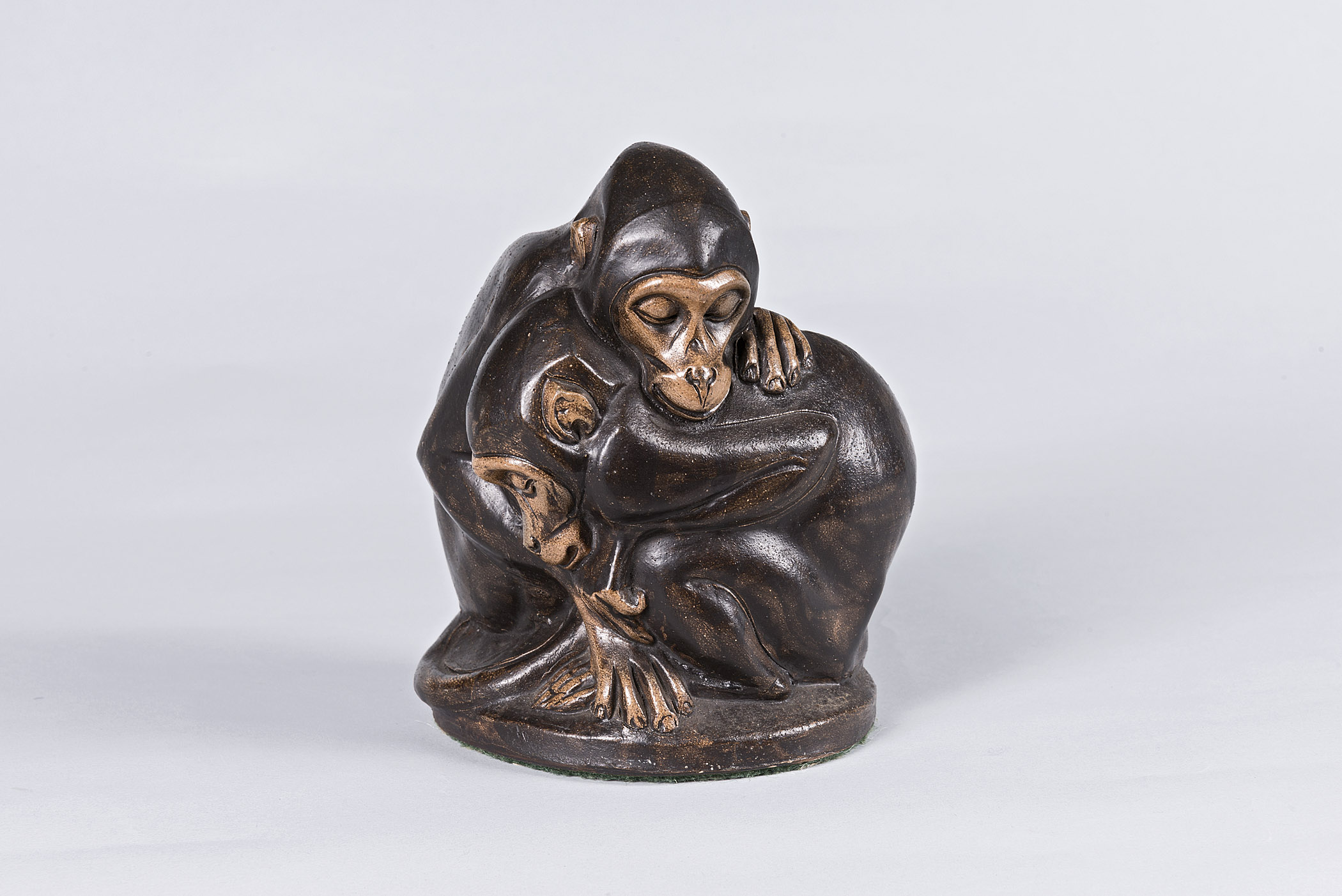 plant and animal motifs
plant and animal motifs
Mendes da Costa was particularly inexhaustible in producing small objects with plant and animal motifs, often with a practical function, such as window boxes, flower pots, dishes, piggy banks, beakers, ashtrays, candlesticks and vases. His intention was to beautify the household goods and, thus, the entire household. These two monkeys, asleep in a warm embrace, had no practical purpose. They were made as decorative ‘objets d’art’ for the interior, for on a writing desk, a table or mantelpiece. Ten to one that Helene herself, or one of her grandchildren, stroked these endearing creatures from time to time. Unfortunately, they are also alluring enough to want to take home with you and are, thus, necessarily displayed out of reach in the museum. This inevitably results in them losing some of their original appeal.
municipal zoos
As a citizen of Amsterdam, Mendes da Costa frequently worked in the Artis Royal Zoo, the only place where he could see monkeys and other ‘wild’ animals in real life. Artis, founded in 1838, was the first municipal zoo in the Netherlands. Like the municipal parks, theatres and concert halls, municipal zoos were a typical product of the metropolitan, civil society. They appeared all over Europe in the 19th century. Thus, thanks in part to the municipal zoo, a new genre in sculptural art emerged: the animal figure. That occurred firstly in France, where romantic animal sculptors, the animaliers, depicted the wild animal in all its raw power and often in bloodthirsty scenes. This violence passed the Netherlands by. The animal sculptures by Mendes and his colleagues depict more innocent wild animals, such as deer or, as with the two monkeys, they are real zoo animals. And perhaps for that very reason they feel closer to us and, even in a display case, successfully appeal to our emotions.

Lisette Pelsers
September 2012
